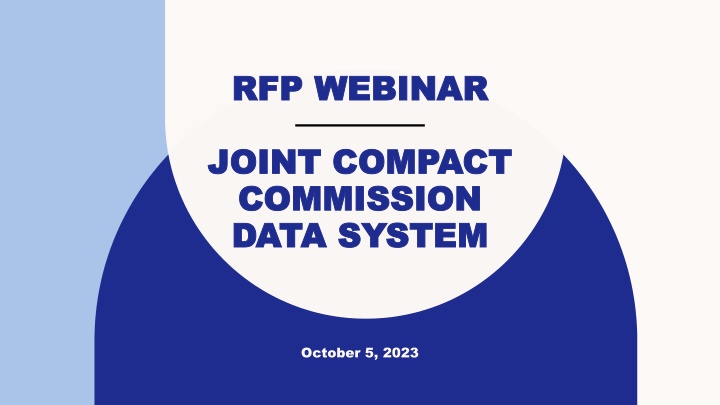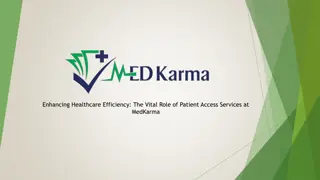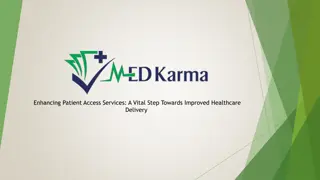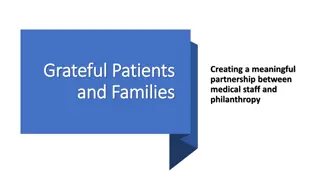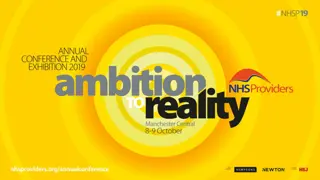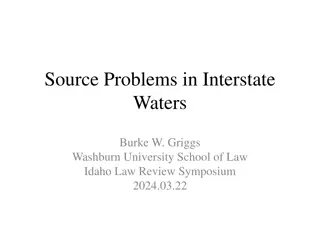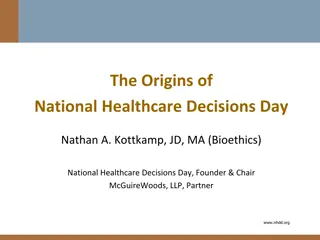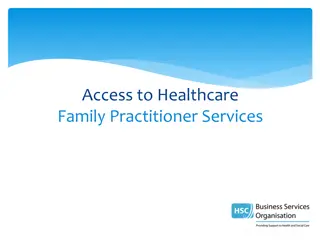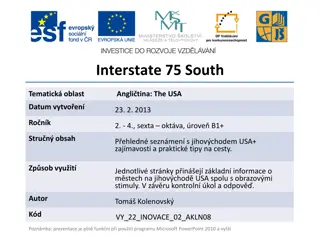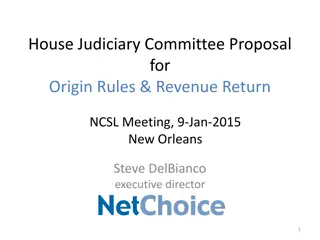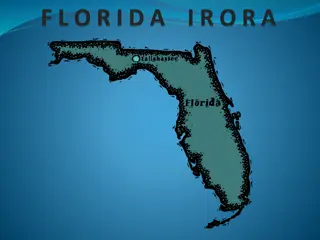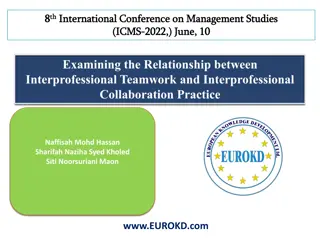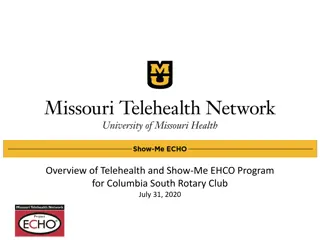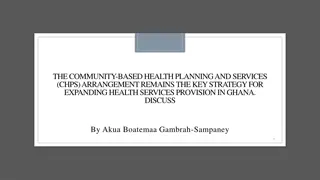Interstate Compact - Enhancing Healthcare Access through Collaboration
Explore the concept of interstate compacts and their role in improving healthcare access by allowing qualified professionals to practice across state borders. Discover the key components of an RFP related to this initiative, including background, purpose, objectives, and operating constraints. Learn about agile processes, open-source software considerations, and the importance of user-centered design in achieving incremental improvements. Join the upcoming webinar on October 5, 2023, to delve deeper into these critical topics.
Download Presentation

Please find below an Image/Link to download the presentation.
The content on the website is provided AS IS for your information and personal use only. It may not be sold, licensed, or shared on other websites without obtaining consent from the author.If you encounter any issues during the download, it is possible that the publisher has removed the file from their server.
You are allowed to download the files provided on this website for personal or commercial use, subject to the condition that they are used lawfully. All files are the property of their respective owners.
The content on the website is provided AS IS for your information and personal use only. It may not be sold, licensed, or shared on other websites without obtaining consent from the author.
E N D
Presentation Transcript
RFP WEBINAR RFP WEBINAR JOINT COMPACT JOINT COMPACT COMMISSION COMMISSION DATA SYSTEM DATA SYSTEM October 5, 2023
AGENDA AGENDA Introduction of Organizations Compacts 101 Review of RFP Q & A
WHAT IS AN INTERSTATE COMPACT? A legal, legislatively enacted contract between two or more states that allows states to: Cooperation Cooperatively address shared problems Sovereignty Maintain sovereignty over state issues Respond to national priorities with one voice Unity Massage Therapy TA Group Pre-Meeting Massage Therapy TA Group Meeting
6 RFP COMPONENTS RFP COMPONENTS 1.Background and Purpose 2.Scope 3.Objectives 4.Contract Type 5.Operating Constraints 6.Instructions and Evaluation
7 AGILE PROCESS AGILE PROCESS Allows for user centered design Uses sprints to accomplish incremental design and improvements
8 OPEN SOURCE OPEN SOURCE Open source software is not a strict requirement, but it is an evaluation factor If a company can present a compelling reason for using proprietary software and is still the best choice overall, the Commissions may opt to use their software. See Section 5.3 Data Rights and Ownership of Deliverables
9 BACKGROUND AND PURPOSE BACKGROUND AND PURPOSE Individual states use unique licensing systems that cannot easily, quickly, or securely share information for the purpose of expanding access to healthcare by enabling more individuals to practice in multiple states via an interstate compact
10 SCOPE SCOPE We are improving access to healthcare and protecting the public by facilitating the ability of qualified professionals to practice across state borders through an interstate licensing compact.
11 OBJECTIVES OBJECTIVES User Stories Deliverables and the Quality Assurance Surveillance Plan
OBJECTIVES OBJECTIVES USER STORIES As a practitioner, I want to be able to go online, apply for the interstate privilege to practice, pay the fees and get a confirmation my privilege has been issued. USER STORIES 12 As a Compact Executive Director, I want to ensure member states can access relevant information so that privileges to practice can easily be issued and states know when a new privilege has been purchased for their state. As a state licensing professional, I want to be able to track financial transactions with the compact for my state so that my auditor will be happy. As a practitioner, I want to know when my compact privilege expires and receive an expiration notice so that I can renew it.
13 OBJECTIVES OBJECTIVES QASP QASP Deliverables, Performance Standards, Acceptable Quality Level, Methods of Assessment Deliverables: Tested Code Properly Styled Code Accessible Deployed Documented Secure User Research
14 CONTRACT TYPE CONTRACT TYPE $863,000 currently budgeted Not to exceed, time and materials contract One year contract with two additional options years
15 OPERATING CONSTRAINTS OPERATING CONSTRAINTS Software solution must be designed for a standard, commercial-grade cloud-based environment that has a secured government environment available Key Personnel Project Manager and Technical Lead
16 INSTRUCTIONS INSTRUCTIONS Submission Instructions - November 20th at 5pm ET to ieliassen@csg.org Answers to received questions by November 6th on websites
17 EVALUATION FACTORS EVALUATION FACTORS 1. Technical approach 2. Staffing approach 3. Similar experience 4. Price
18 TECHNICAL APPROACH TECHNICAL APPROACH (a)In evaluating an Offeror s technical approach, Joint Commissions will consider (a) the quality of the Offeror s plans to provide the open source, agile development services required, including user research and design (b)the extent of the Offeror s understanding of the details of the project requirements, and (c)the extent to which the Offeror has identified potential obstacles to efficient development, and has proposed realistic approaches to overcome those potential obstacles.
19 STAFFING APPROACH STAFFING APPROACH (a)the skills and experience of the Key Personnel and other individuals that the Offeror plans to use to provide the required services (b)the mix of labor categories that will comprise the Offeror s proposed development team, and (c)the Offeror s proposed number of hours of services to be provided by each member of the Offeror s proposed development team.
20 SIMILAR EXPERIENCE SIMILAR EXPERIENCE In evaluating an Offeror s similar experience, the Joint Commissions will consider the extent to which the Offeror has recently provided software development services for projects that are similar in size, scope, and complexity to the project described in this RFQ, and the quality of those services.
21 PRICE PRICE In evaluating an Offeror s price, the Joint Commissions will consider the total of the Offeror s estimated costs for the development services, and travel expenses proposed (if any), the total period of performance. Proposals should include an hourly rate. This total amount should be reflected in the Excel workbook described in the Price Submission subsection. Other forms of budget will not be accepted.
22 EVALUATION TIMELINE EVALUATION TIMELINE Submissions due November 20 CSG evaluates for responsiveness. USDR conducts technical evaluation. Joint Commissions meet in December. Interviews in January Vendor decided ~January.
Questions? Presentation to the ADA Board of Trustees Slide 17 Presentation to AADB Slide 16
